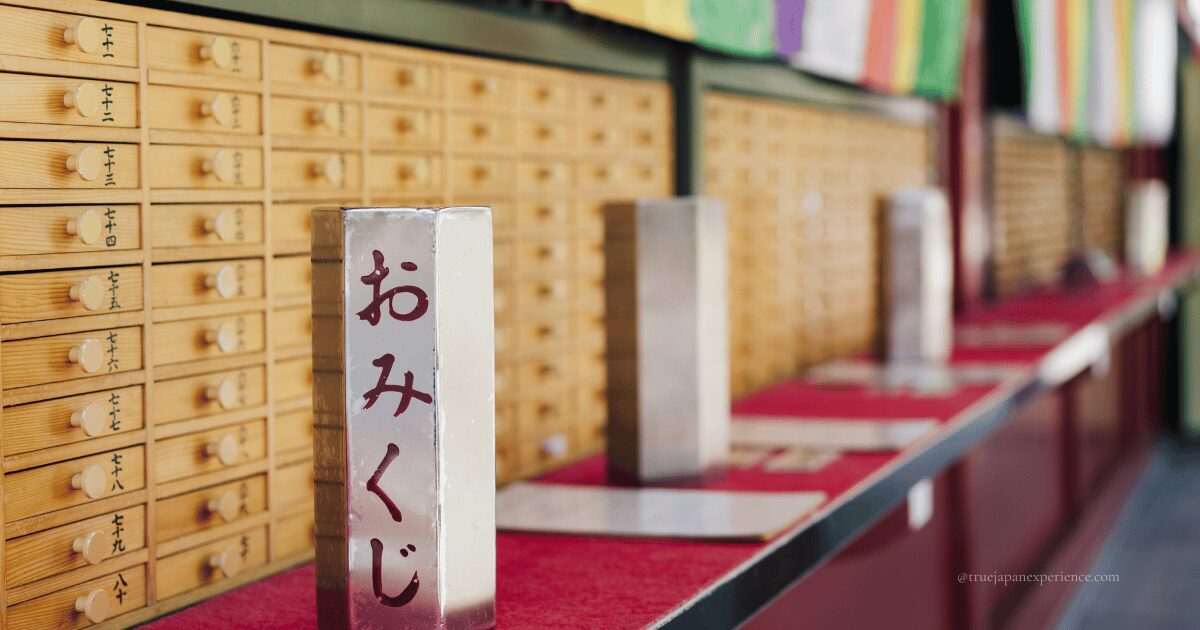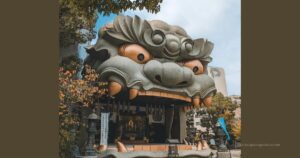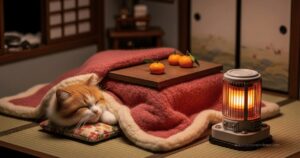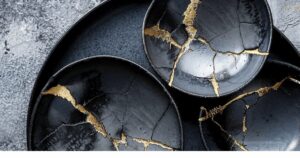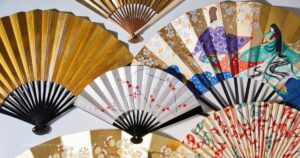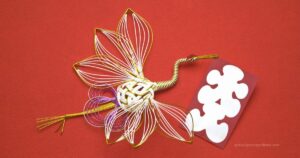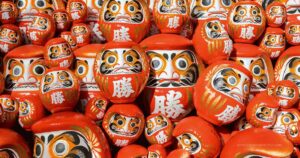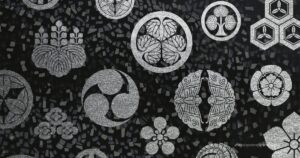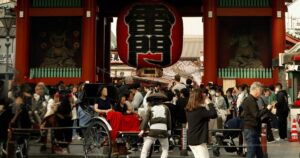Do you know what Japanese omikuji are?
These fortune slips offer more than luck—they give advice from the gods about your life.
Let’s explore what omikuji means, how to draw one, and what to do afterward.
What Are Japanese Omikuji?
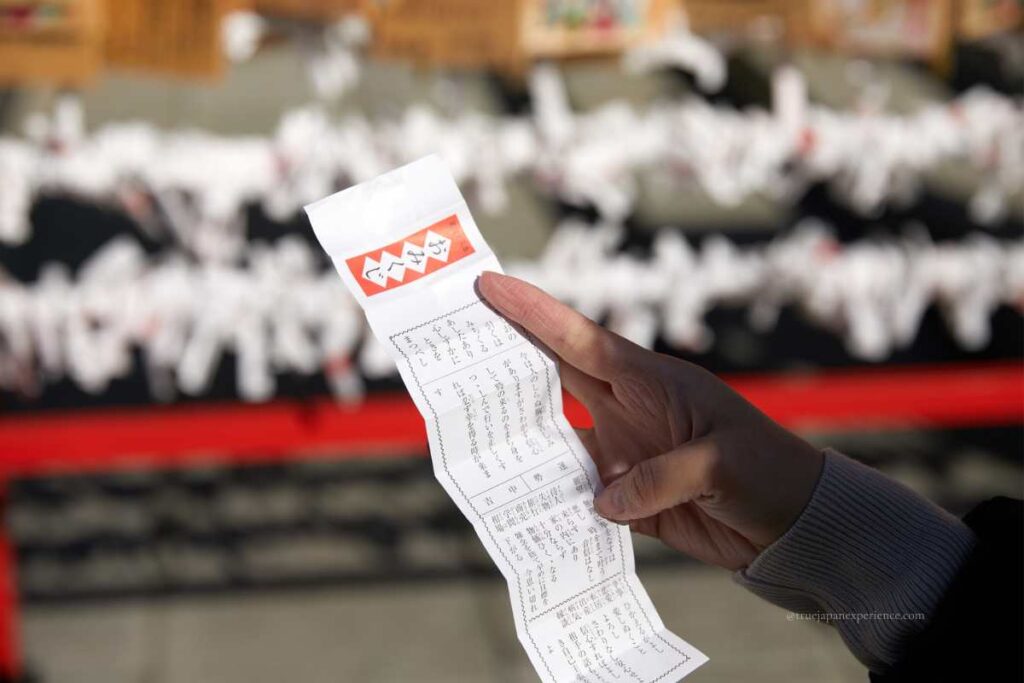
If you visit a shrine or temple in Japan, you may notice people shaking a box or drawing small paper slips.
These are called Japanese omikuji—sacred paper slips found at shrines and temples. They offer personal messages or advice from the gods about your life, such as love, health, or general fortune.
What makes them unique is that you draw them randomly, without giving your name or birthday. This randomness is seen as divine will.
Omikuji are part of Japan’s traditional religious practice. Many people draw one to receive guidance for their current situation or to reflect on how to move forward.
Some people get happy when they see “Great Blessing” (daikichi), while others worry if they get “Bad Luck” (kyō).
But the true value of omikuji is in the advice it offers, not just the luck label.
The History of Japanese Omikuji
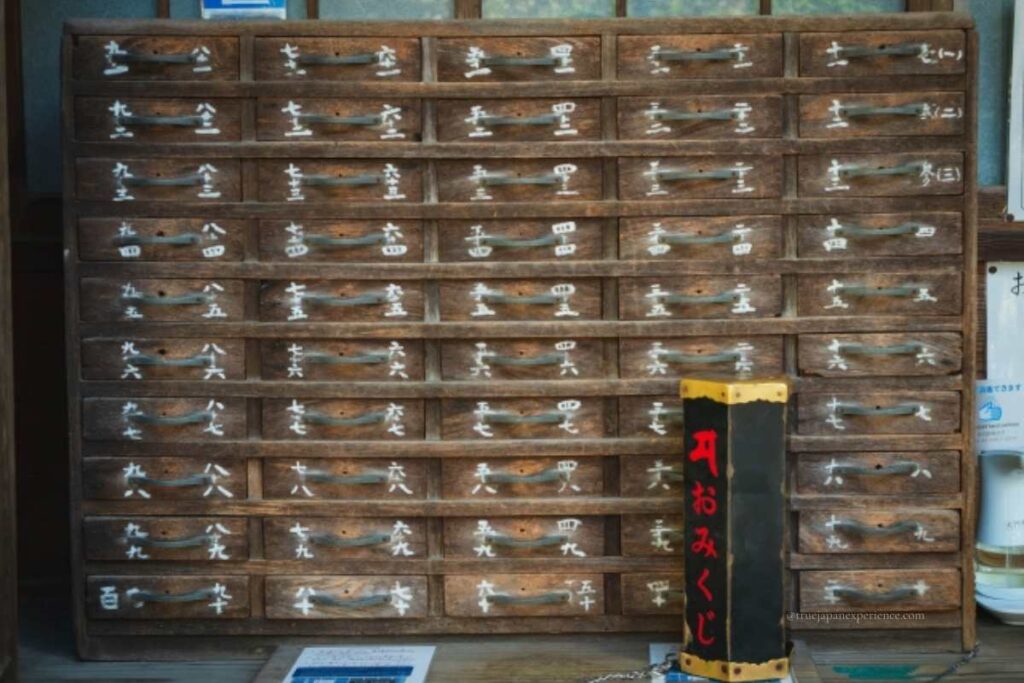
The history of omikuji goes back a long time—and it began not in Japan, but in ancient China.
In old Chinese temples, people used small sticks or slips called lots to ask the gods about big matters like politics or a person’s future. These lots had messages written by priests and were believed to show the will of heaven.
Omikuji came to Japan along with Buddhism.
By the Heian period (794–1185), drawing sacred lots became a ritual at the imperial court. It was called mikujihiki, and nobles used it to decide important things.
The omikuji we see today started to take shape during the Nanbokuchō to Muromachi periods (14th century).
A famous monk named Gansan Daishi (also called Ryōgen) created a Japanese version of Chinese fortune lots, based on a set called Tenjiku Reisen. He made a collection of 100 paper fortunes called Gansan Daishi Hyakusen, which many temples began to use.
In the Edo period (1603–1868), omikuji became popular with everyday people.
Today’s omikuji style was shaped by all of this history. From the palace to the people, from temples to shrines, omikuji became a spiritual tool to guide daily life in Japan.
How Is Omikuji Different from Fortune-Telling?
Many visitors wonder:
Is Japanese omikuji the same as fortune-telling?
Some people think omikuji and fortune-telling are the same because both talk about your life or future.
But they are actually very different in meaning and purpose.
Omikuji: A Message from the Gods
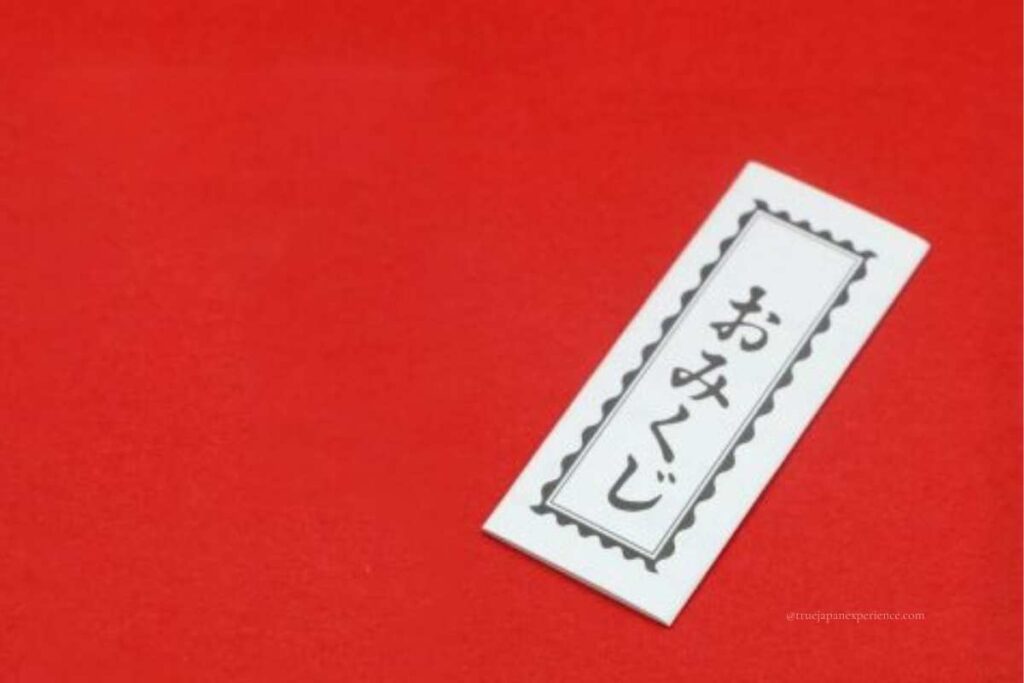
Omikuji is a traditional practice at Japanese shrines and temples.
It is part of Shinto and Buddhist belief, where people receive divine guidance or blessings.
You do not talk to a person. Instead, you draw a paper slip that shows your luck level (like Great Blessing or Bad Luck) and gives advice about areas such as health, love, or travel.
People believe the result is a message directly from the gods or spirits.
You can use the message to think about your life and try to do better from now on.
The message is not just about luck—it’s something to keep in mind as you live your daily life.
Fortune-Telling: A Personalized Reading
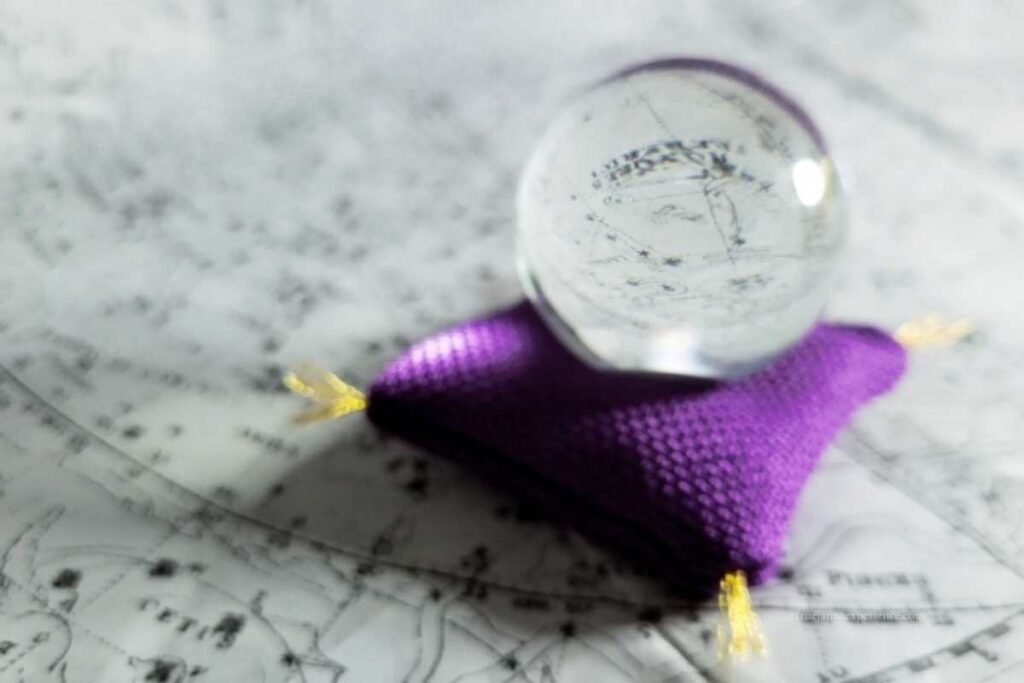
Fortune-telling involves a person—usually called a fortune-teller—who reads your future using special tools like tarot cards, astrology charts, palm reading, or even blood type and name analysis.
You usually share your name, birthday, or personal concerns, and the fortune-teller gives advice based on that.
Fortune-telling can happen anywhere—in shops, homes, or even online.
It’s more about personal questions and life advice, often like a mini-counseling session.
The Main Differences
| Omikuji | Fortune-Telling |
|---|---|
| Drawn at shrines or temples | Can be done anywhere |
| No human reader | Needs a fortune-teller |
| Based on faith and tradition | Based on various methods and skills |
| One message for the moment | Personalized to your situation |
| No personal info needed | Personal info is required |
| Seen as a message from the gods | Seen as advice from a human |
In short, omikuji is like a sacred sign you discover on your own. Fortune-telling is more like asking someone else to look into your future.
Both can be meaningful—but in very different ways.
Types of Japanese Omikuji: From Great Luck to Bad Luck
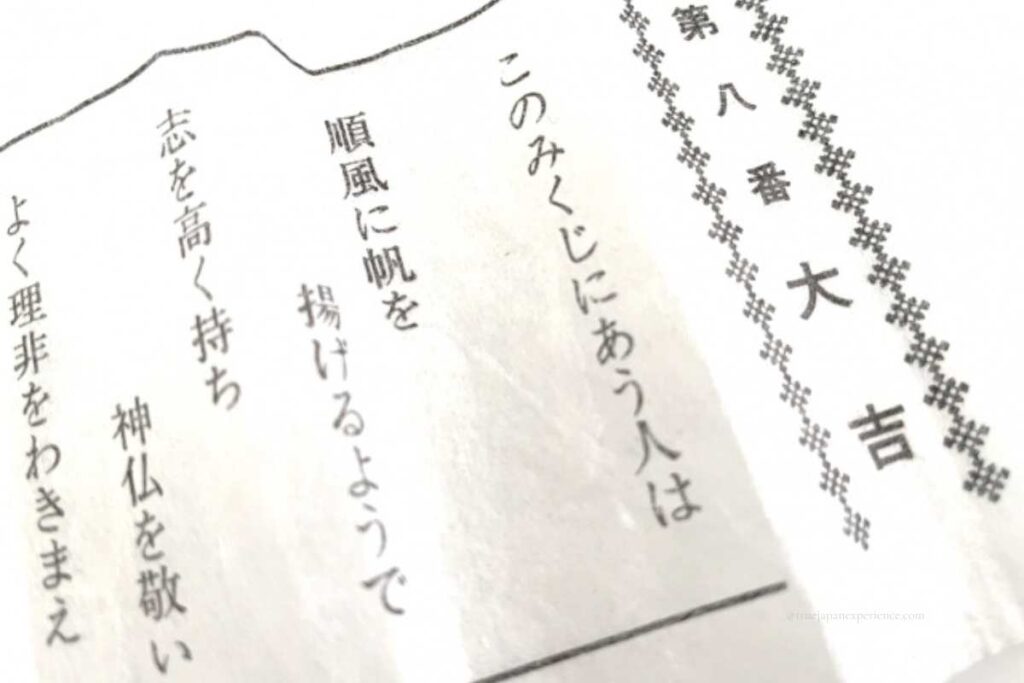
Japanese omikuji come in many types. Each one shows your general fortune—from very lucky to not so lucky.
・Daikichi (Great Blessing):the best result
・Kichi (Good Luck)
・Chūkichi (Middle Blessing)
・Shōkichi (Small Blessing)
・Suekichi (Future Blessing)
・Kyō (Bad Luck)
・Daikyō (Great Bad Luck)
Most shrines and temples follow this basic order:
Daikichi > Kichi > Chūkichi > Shōkichi > Suekichi > Kyō > Daikyō
However, some places have their own styles. For example, Hikawa Shrine in Saitama offers over 10 different types of omikuji! Some even include rare types like Kōkyō (Mixed Fortune) or Matsukyō (Ending Luck).
Recently, more and more shrines and temples in Japan offer omikuji in different languages. They often provide versions in English, Chinese, Korean, Thai, and more.
Thanks to this, even first-time visitors can enjoy omikuji without worry. The fortunes are easier to read and understand, with clear translations and helpful notes.
Some omikuji even explain how to draw them, what the results mean, and how to read Japanese-style dates and numbers.
If you see a stand with multilingual omikuji, don’t hesitate to try it. It’s a great way to connect with the local culture and understand the message from the gods or spirits more deeply.
Is It Okay to Draw Omikuji Again?
There is no strict rule on how many times you can draw omikuji. You can do it more than once in a year, or at different temples and shrines.
However, many people believe that the first omikuji you draw carries a special message from the gods or spirits.
It’s tempting to draw another omikuji if you get a bad one. But drawing again right away is not recommended.
If you draw a bad result and quickly try again, it may seem like you are not respecting the message.
It’s better to take time to reflect on the advice, or draw again later or at a different place.
If you have different wishes (like love, study, or health), it’s okay to draw again for each one.
What to Do with Your Japanese Omikuji After Reading
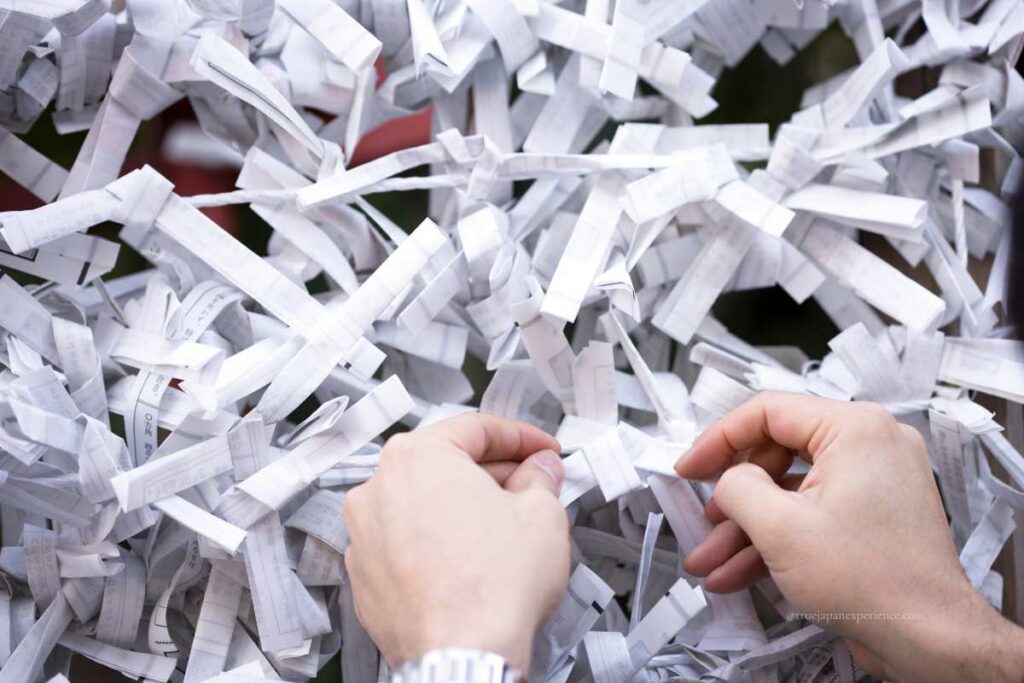
After reading your omikuji, you usually have two options: tie it at the shrine or temple, or keep it with you.
Many people tie their omikuji to a special rack or wire stand found in the shrine grounds. This is common when the result is bad. Tying it is a way to leave the bad luck behind and ask the gods to turn things around.
But even if the result is not bad, you can still tie your omikuji. Some people believe it helps “tie” their wishes to the gods and build a stronger connection.
Others choose to take their omikuji home. You can keep it in your wallet or bag and look at it later. Even a bad fortune can include helpful advice or warnings. That’s why some people—like me—keep it as a reminder from the gods and read it from time to time.
There is no strict rule. Whether you tie it or take it home, what matters most is how you reflect on the message and live your life with care.
If you do tie your omikuji, please use the designated area. Don’t tie it to random trees or fences.
How to get Japanese omikuji: A Step-by-Step Guide

If you’re trying omikuji for the first time, don’t worry—it’s easy and fun. Here’s how to do it respectfully at a Japanese shrine or temple:
Pray at the main hall before drawing your omikuji.
Think of your wish or question. In your heart, ask for guidance about something important to you—like love, work, or health.
Draw your omikuji. Each place has a slightly different method.
You might shake a wooden box and pull out a stick with a number, then get a slip from a staff member or drawer. Sometimes you just pick a paper directly from a box.
You’ll see a luck level (like “Great Blessing” or “Small Curse”) and a message about different parts of your life.
Think about the message.
It’s not just about whether your luck is good or bad.
The most important part is the advice. How can you use it to reflect, grow, or act wisely?
Final Thoughts: Take the Message to Heart
Whether your Japanese omikuji says “Great Blessing” or “Bad Luck,” don’t worry too much.
The most important part is the advice.
Use it to think about your path and how to move forward.
Some messages may be strict. But sometimes, those are the words we need the most.
So, next time you visit a shrine or temple in Japan, draw a Japanese omikuji and take a moment to listen to what the gods may be trying to tell you.
Want to learn more about Japanese culture?
Check out our guides on how to use omamori to deepen your experience in Japan.
